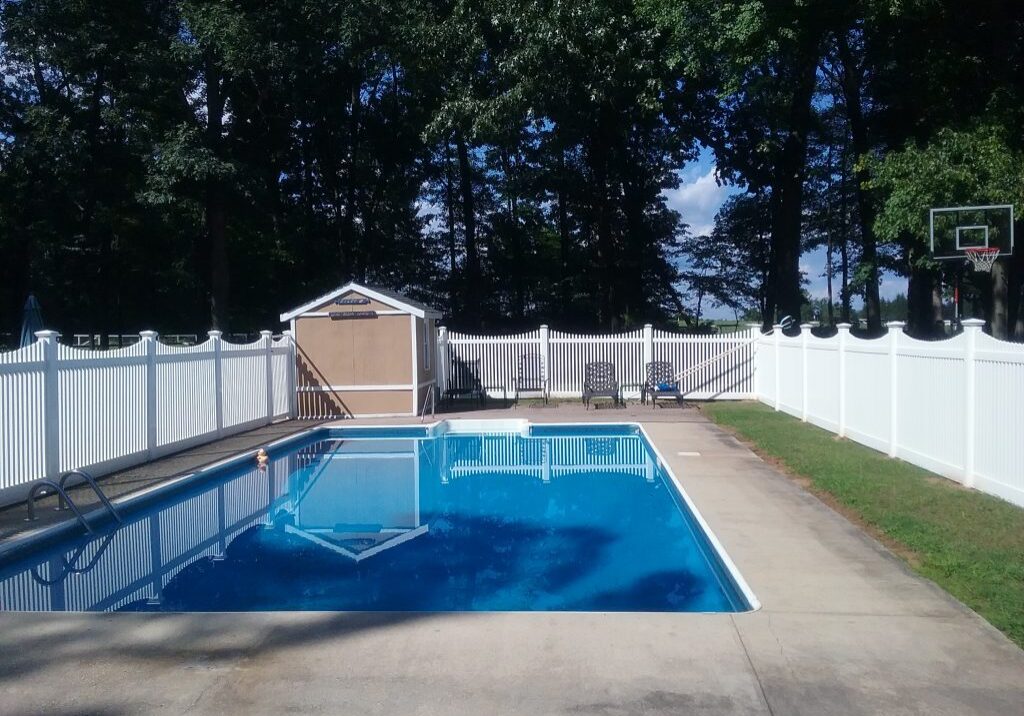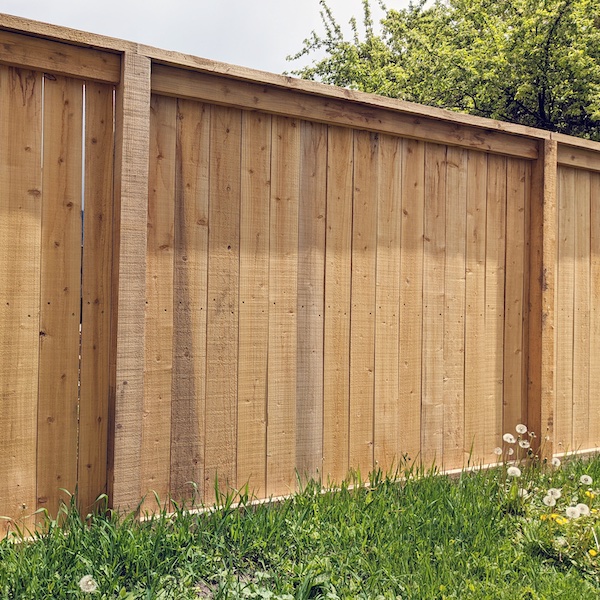All Categories
Featured
Mounting a fence on sloped or irregular surface might look like a complicated task, however with the best methods, it's completely possible to achieve a lovely and useful outcome. Whether you're taking care of a light slope or a high incline, there are different installment techniques to suit your needs. Here's whatever you require to find out about setting up a fence on sloped surface.
Difficulties of Installing a Fencing on Sloped Terrain. Unequal or sloped surface can create some obstacles during fence installation, especially when it involves making certain the fencing remains degree and safeguard. The main problem is ensuring that the fence does not look misaligned or end up being unsteady with time. An effectively installed fencing on sloped land calls for the ideal strategy to preserve both architectural honesty and aesthetic charm. Without careful consideration, an improperly mounted fencing might result in unequal panels, sagging, or perhaps damages from wind or climate condition.
![]()
Ideal Fence Techniques for Sloped Terrain. When it involves sloped terrain, two main installment techniques are commonly made use of: the step approach and the shelf technique.
In this layout, each area of the fencing is "stepped" to comply with the surface's slope. The individual panels are placed at various heights to match the incline of the land, developing a stair-step impact across the size of the fencing.
The step setup approach functions well with products such as metal, wood, and plastic, and it's a reasonably simple setup procedure. However, it may leave spaces at the base of the surround some locations, depending upon the size of the incline.
Shelf Installment Approach For steeper slopes, a racked installment might be the much better choice. This approach enables the fencing panels to comply with the natural incline of the land without stepping. In a racked installment, the panels are installed in a continuous line, however they are adapted to suit the slope. This provides a smoother, extra smooth appearance compared to the stepped design.
A racked setup ensures that the fence maintains a constant elevation throughout its length while still adjusting to the incline. This approach is particularly matched for chain-link or functioned iron fencings, however can likewise function well with wood or plastic fencings that are adaptable sufficient to get used to the surface.
Choosing the Right Secure Fencing Product for Sloped Land. The option of material plays a substantial function in how well the fence will certainly carry out on uneven ground. Some materials are more adaptable to sloped surface than others, so it is essential to choose sensibly.
Wood Fence: Timber is a functional product and functions well for both stepped and racked setups. It can be personalized to fit any kind of incline, though it needs regular maintenance to avoid degeneration, particularly on unequal terrain where moisture build-up can be a problem.
Vinyl Secure fencing: Vinyl fencings are long lasting, low-maintenance, and ideal for both tipped and racked installments. Due to the fact that plastic is a stiff material, it might not be as adaptable to steep inclines, however it still provides a smooth, continuous line when mounted effectively.
Metal Secure Fencing (Chain-Link or Wrought Iron): Steel fences like chain-link or functioned iron are suitable for sloped terrain because they can be gotten used to adhere to the land's natural slope. Chain-link is especially versatile and can be set up in a means that allows the fencing to follow the terrain's slope without creating gaps.
Composite Secure fencing: Composite fencings, made from a mix of wood fibers and plastic, are additionally a terrific option for sloped areas. These fences are durable, weather-resistant, and can be customized for different sorts of surface.
Just How to Plan For Installation. Prior to beginning a fence installment on unequal terrain, it's important to prepare the residential or commercial property appropriately. Right here are a couple of steps to consider:
Examine the Incline: Start by gauging the slope of the land. Use a degree or a determining tape to establish the incline's extent. This will certainly assist you choose the proper installment approach and products.
Clear the Area: Remove any barriers such as rocks, trees, or bushes from the area where the fence will be set up. This will make certain smooth installment and prevent damage to the fence or the bordering landscape.
Examine Neighborhood Laws: Guarantee that you recognize any local building regulations or laws for fencing setups. Some locations have specific rules regarding the height of fencings, problem needs, or the kinds of products allowed.
Pick the Right Fencing Type: Based upon your incline and the appearance you want, choose the best products and installation technique. Wood, vinyl, and metal all have their advantages, yet you require to choose the one that fits your specific terrain and aesthetic goals.
![]()
Expert Installment vs. Do It Yourself. While it is feasible to install a fencing on irregular or sloped surface yourself, it might be challenging, especially for high inclines or bigger areas. Employing a specialist fence installer can make certain that the fence is properly straightened, steady, and long lasting. Professionals likewise have the experience to evaluate the land, use the suitable installation techniques, and make certain that your fence meets regional building ordinance.
Conclusion. Installing a fencing on sloped or irregular surface is certainly feasible with the right methods, materials, and tools. Whether you select a step or racked setup, or pick one of the most suitable fencing material, making sure that the fencing complies with the shapes of the land while remaining stable is key. Taking the time to evaluate your home, pick the ideal materials, and potentially employing a professional can result in a beautifully mounted fence that includes both privacy and aesthetic interest your residential or commercial property.
Difficulties of Installing a Fencing on Sloped Terrain. Unequal or sloped surface can create some obstacles during fence installation, especially when it involves making certain the fencing remains degree and safeguard. The main problem is ensuring that the fence does not look misaligned or end up being unsteady with time. An effectively installed fencing on sloped land calls for the ideal strategy to preserve both architectural honesty and aesthetic charm. Without careful consideration, an improperly mounted fencing might result in unequal panels, sagging, or perhaps damages from wind or climate condition.

Ideal Fence Techniques for Sloped Terrain. When it involves sloped terrain, two main installment techniques are commonly made use of: the step approach and the shelf technique.
In this layout, each area of the fencing is "stepped" to comply with the surface's slope. The individual panels are placed at various heights to match the incline of the land, developing a stair-step impact across the size of the fencing.
The step setup approach functions well with products such as metal, wood, and plastic, and it's a reasonably simple setup procedure. However, it may leave spaces at the base of the surround some locations, depending upon the size of the incline.
Shelf Installment Approach For steeper slopes, a racked installment might be the much better choice. This approach enables the fencing panels to comply with the natural incline of the land without stepping. In a racked installment, the panels are installed in a continuous line, however they are adapted to suit the slope. This provides a smoother, extra smooth appearance compared to the stepped design.
A racked setup ensures that the fence maintains a constant elevation throughout its length while still adjusting to the incline. This approach is particularly matched for chain-link or functioned iron fencings, however can likewise function well with wood or plastic fencings that are adaptable sufficient to get used to the surface.
Choosing the Right Secure Fencing Product for Sloped Land. The option of material plays a substantial function in how well the fence will certainly carry out on uneven ground. Some materials are more adaptable to sloped surface than others, so it is essential to choose sensibly.
Wood Fence: Timber is a functional product and functions well for both stepped and racked setups. It can be personalized to fit any kind of incline, though it needs regular maintenance to avoid degeneration, particularly on unequal terrain where moisture build-up can be a problem.
Vinyl Secure fencing: Vinyl fencings are long lasting, low-maintenance, and ideal for both tipped and racked installments. Due to the fact that plastic is a stiff material, it might not be as adaptable to steep inclines, however it still provides a smooth, continuous line when mounted effectively.
Metal Secure Fencing (Chain-Link or Wrought Iron): Steel fences like chain-link or functioned iron are suitable for sloped terrain because they can be gotten used to adhere to the land's natural slope. Chain-link is especially versatile and can be set up in a means that allows the fencing to follow the terrain's slope without creating gaps.
Composite Secure fencing: Composite fencings, made from a mix of wood fibers and plastic, are additionally a terrific option for sloped areas. These fences are durable, weather-resistant, and can be customized for different sorts of surface.
Just How to Plan For Installation. Prior to beginning a fence installment on unequal terrain, it's important to prepare the residential or commercial property appropriately. Right here are a couple of steps to consider:
Examine the Incline: Start by gauging the slope of the land. Use a degree or a determining tape to establish the incline's extent. This will certainly assist you choose the proper installment approach and products.
Clear the Area: Remove any barriers such as rocks, trees, or bushes from the area where the fence will be set up. This will make certain smooth installment and prevent damage to the fence or the bordering landscape.
Examine Neighborhood Laws: Guarantee that you recognize any local building regulations or laws for fencing setups. Some locations have specific rules regarding the height of fencings, problem needs, or the kinds of products allowed.
Pick the Right Fencing Type: Based upon your incline and the appearance you want, choose the best products and installation technique. Wood, vinyl, and metal all have their advantages, yet you require to choose the one that fits your specific terrain and aesthetic goals.

Expert Installment vs. Do It Yourself. While it is feasible to install a fencing on irregular or sloped surface yourself, it might be challenging, especially for high inclines or bigger areas. Employing a specialist fence installer can make certain that the fence is properly straightened, steady, and long lasting. Professionals likewise have the experience to evaluate the land, use the suitable installation techniques, and make certain that your fence meets regional building ordinance.
Conclusion. Installing a fencing on sloped or irregular surface is certainly feasible with the right methods, materials, and tools. Whether you select a step or racked setup, or pick one of the most suitable fencing material, making sure that the fencing complies with the shapes of the land while remaining stable is key. Taking the time to evaluate your home, pick the ideal materials, and potentially employing a professional can result in a beautifully mounted fence that includes both privacy and aesthetic interest your residential or commercial property.
Latest Posts
Uncover Affordable Auto Repairs with Montclare’s Limited-Time Service Specials
Published en
1 min read
Recognizing When Your Car Needs Skilled Auto Repair at Montclare Auto Repair
Published en
1 min read
Find Out Reduce Expenses on Car Maintenance with Montclare Auto Repair’s Special Deals
Published en
1 min read
More
Latest Posts
Uncover Affordable Auto Repairs with Montclare’s Limited-Time Service Specials
Published May 28, 25
1 min read
Recognizing When Your Car Needs Skilled Auto Repair at Montclare Auto Repair
Published May 26, 25
1 min read
Find Out Reduce Expenses on Car Maintenance with Montclare Auto Repair’s Special Deals
Published May 23, 25
1 min read